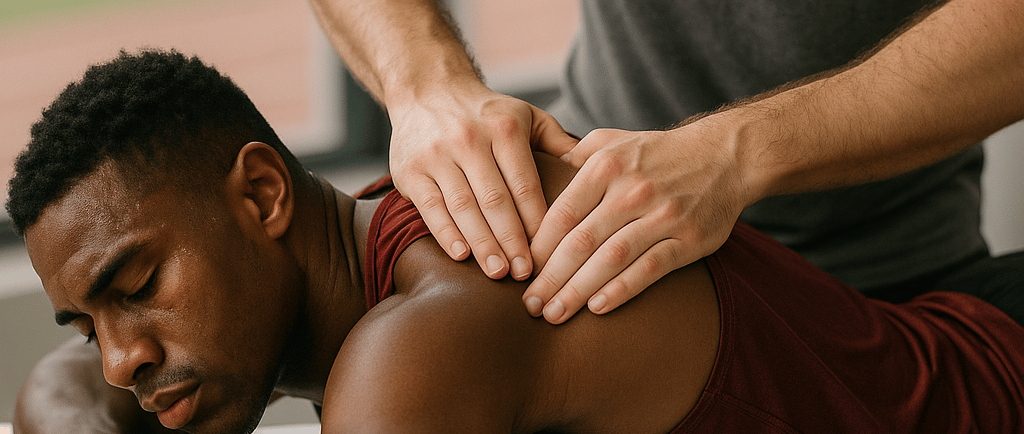Sports Massage: Boost Performance, Speed Recovery & Prevent Injuries
Discover how sports massage is an athlete's secret weapon. Learn techniques for muscle preparation, injury prevention, faster recovery, and enhanced performance to gain your competitive edge.
Michael Davey
7/19/20252 min read


The Athlete's Edge: How Sports Massage Fuels Performance & Recovery
For athletes, whether you're a seasoned marathoner, a dedicated gym-goer, or a weekend warrior, your body is your most valuable asset. You push it, challenge it, and rely on it to perform. But intense training and competition also bring muscle soreness, stiffness, and the risk of injury. This is where Sports Massage steps in, offering far more than just a relaxing rub-down. It's a strategic tool designed to optimize your physical potential, prevent setbacks, and accelerate your journey back to peak performance.
What Makes Sports Massage Different?
Unlike a general relaxation massage, Sports Massage is highly targeted and purposeful. It's a dynamic form of bodywork that integrates various techniques tailored to the unique needs of an athlete's body and their specific sport. The focus is less on overall relaxation and more on:
Muscle Preparation: Getting muscles ready for activity.
Injury Prevention: Identifying and addressing imbalances or tight spots before they become problems.
Performance Enhancement: Improving flexibility, range of motion, and muscle efficiency.
Rapid Recovery: Helping the body bounce back faster after exertion.
Key Techniques & When They're Used
Sports massage therapists utilize a diverse toolkit of techniques, often applied at different stages of an athlete's training cycle:
Deep Tissue Work: To break down adhesions, release chronic tension, and address knots in deeper muscle layers.
Compression: Rhythmic pressing to warm up muscles and increase circulation.
Stretching: Passive or active stretches to improve flexibility and lengthen muscle fibers.
Friction: Deep, localized rubbing to break up scar tissue and adhesions around joints and tendons.
Trigger Point Therapy: To deactivate specific hyperirritable spots that cause referred pain.
These techniques are strategically applied based on whether it's a:
Pre-Event Massage: A shorter, invigorating session (15-30 minutes) performed shortly before competition. Focuses on warming up muscles, increasing circulation, and mentally preparing the athlete without inducing fatigue.
Post-Event Massage: Performed after competition or intense training (within 24-48 hours). Aims to reduce muscle soreness, flush out metabolic waste (like lactic acid), prevent stiffness, and promote faster recovery.
Maintenance Massage: Regular sessions during training cycles to address chronic tension, improve flexibility, monitor muscle health, and prevent overuse injuries.
The Undeniable Benefits for Athletes
Integrating Sports Massage into your routine offers a significant competitive edge:
Accelerated Recovery: Reduces Delayed Onset Muscle Soreness (DOMS) and speeds up tissue repair.
Injury Prevention: Identifies and corrects muscle imbalances and tightness before they lead to strains or tears.
Improved Flexibility & Range of Motion: Essential for optimal athletic movement and reducing injury risk.
Enhanced Performance: More pliable muscles can generate more power and move more efficiently.
Reduced Muscle Fatigue: Helps flush out metabolic byproducts that contribute to tiredness.
Mental Preparation & Relaxation: Even intense sports massage can calm the nervous system, reducing pre-competition anxiety and improving focus.
Whether you're aiming for a personal best or simply want to recover faster from your workouts, Sports Massage is an indispensable ally in your athletic journey
URBAN MASSAGE GUIDE
Your trusted source for massage knowledge and wellness insights.
Have a question or suggestion?
Reach us at: urbanmassage@gmail.com
Quick Links:
© 2025 Urban Massage Guide. All rights reserved.
Disclaimer : Urban Massage Guide is built to share knowledge about massage therapy and promote wellness awareness. We respect your privacy and do not share any of your personal information.
